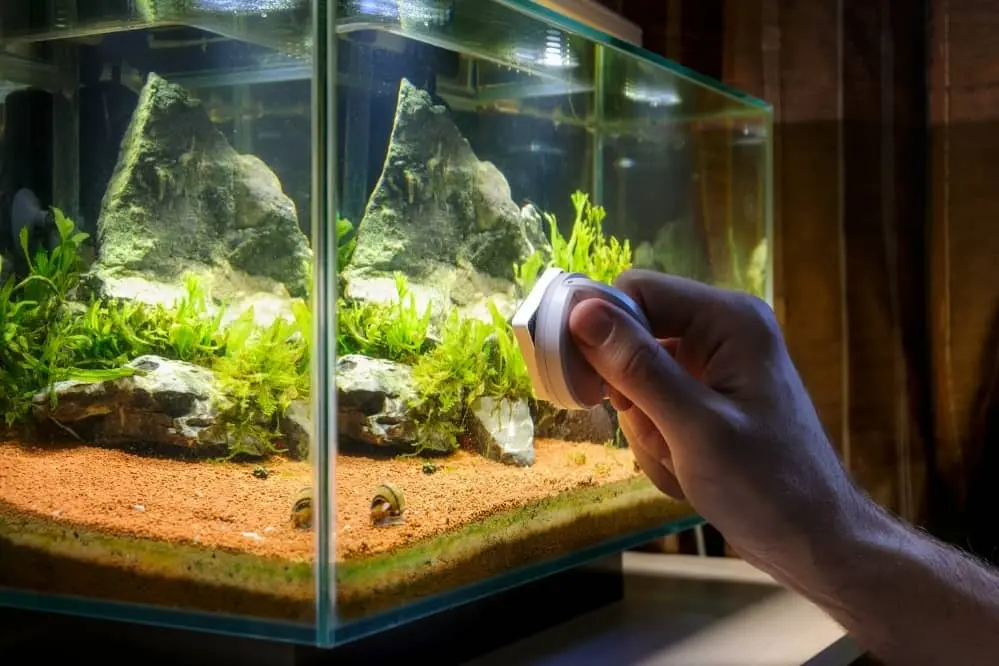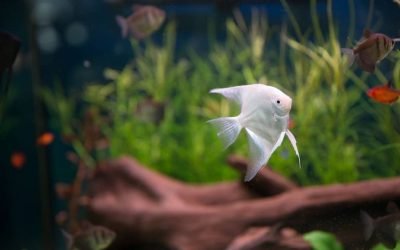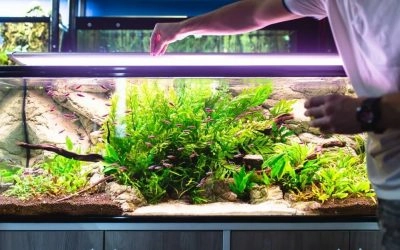Do I need to clean my tank after a fish dies?

Finding one of your pet fish dead in the aquarium can be disheartening. Even if you took every step to ensure the well being of your fish, sometimes the tragedy is unavoidable and you find yourself faced with the question that every aquarium owner has to deal with: what do you do when fish dies in the fish tank?
Yes, you need to clean your tank after fish dies.
When a fish dies in your aquarium, the most urgent thing to do is to take it out of the water ASAP. Examine if it has died with infectious disease such as white spot or fin rot. Observe other fish for the same or closely related symptoms. At this point getting rid of fish should take a back seat to changing of aquarium water. It is fairly possible that the fish died off some disease and leaving water unattended increases the risk of other fish getting infected as well.
How to clean your tank when fish dies inside it?
Following are some of the scenarios illustrating why and how a fish can die, and how you can properly clean the tank and make it habitable for the rest of the other fish.
Death from the old age
If your fish dies from old age, then you only have to clean filter. There is nothing much you can do here. It was not affected or riddled with any disease, so there is no need to change the whole tank water.
Take water from a clean source to clean the filter. Do not use water from the tank where the fish had died.
Death due to some disease
If the death of the fish is due to disease, then it is best if you quarantine the rest of the fish into another tank. Make sure that other tank has all the aquarium essentials such as a heating system, filtration, and other such elements.
Then start by cleaning the substrate, filtration systems, floating plants, and every other thing that resides within the tank where the incident happened.
Fish death due to lack of tank maintenance
Regular partial water changes and routine cleaning of aquarium and aquarium decor is must for long-term health of a fish. If you neglect to do any of these, aquarium becomes inhabitable and death of a fish is inevitable. Unclean environment weakens the immune system of fish and make them vulnerable to bacteria and parasites found in aquarium water.
It is worth remembering that when you do water change, start small. Large water changes will alter the water chemistry drastically. This will shock fish and eventually kill them.
What is the best approach to take after your fish dies?
The best thing to do here is first to identify the problem that led to your fish’s death. There are many different factors that might have contributed to your fish demise.
Was your fish fed properly?
This is something that you want to take seriously to ensure that it doesn’t happen in the future. Go through the past events and try to determine whether there was any change in diet that your fish might not have adapted to? Was the feed expired? Even consider the possibility of the current diet not taking care of all the fish nutrient requirements. This way, you will be able to save a number of other fish if the cause of death was food related.
Did it get sick?
If your fish had died of an illness, look out for symptom of that illness in other aquarium fish. Study their movement, behavior, and eating patterns closely, look for any deviation from their daily routine or any possible symptoms that they are exhibiting. It will allows you to take some rapid action if needed and save it before it ends up dead too.
Test water
One of the primary cause of fish death is unhealthy aquarium water. Test water to detect ammonia and nitrite level in water. Even a slight increase in ammonia and nitrite level makes water toxic for fish.
Also test water to determine if the pH level is within the safe range of your fish. For most freshwater fish, 6.5 to 7.5 pH level is safe and for saltwater fish, pH level higher than 8 is ideal.
How many deaths are acceptable within a community tank?
It is a normal figure if you are experiencing couple of fish death every year. But if you are losing dozens of fish every month then it is a sign that there is something devastatingly wrong with the way the fish is being kept. It might very well be the water condition or a disease slowly creeping it’s way into aquarium ecosystem, leading to a mass wipe down.
When does it become safe to restock the tank?
It is best to refrain from restocking for a few weeks to ensure that threat within the tank has subsided and is habitable for new fresh stock. If water test showed that water quality is normal and dead fish didn’t show any sign of diseases then you may even restock within a week. Continue to study the aquarium ecosystem and only go about restocking when you think that conditions are back to normal.




0 Comments